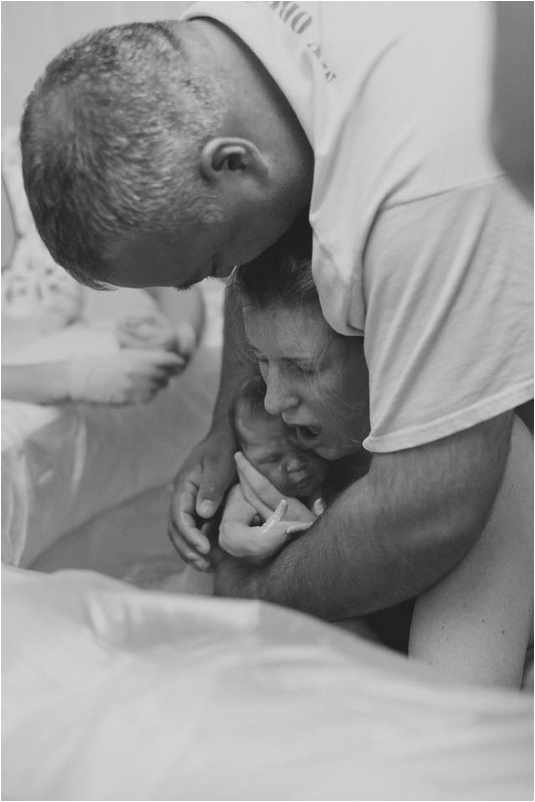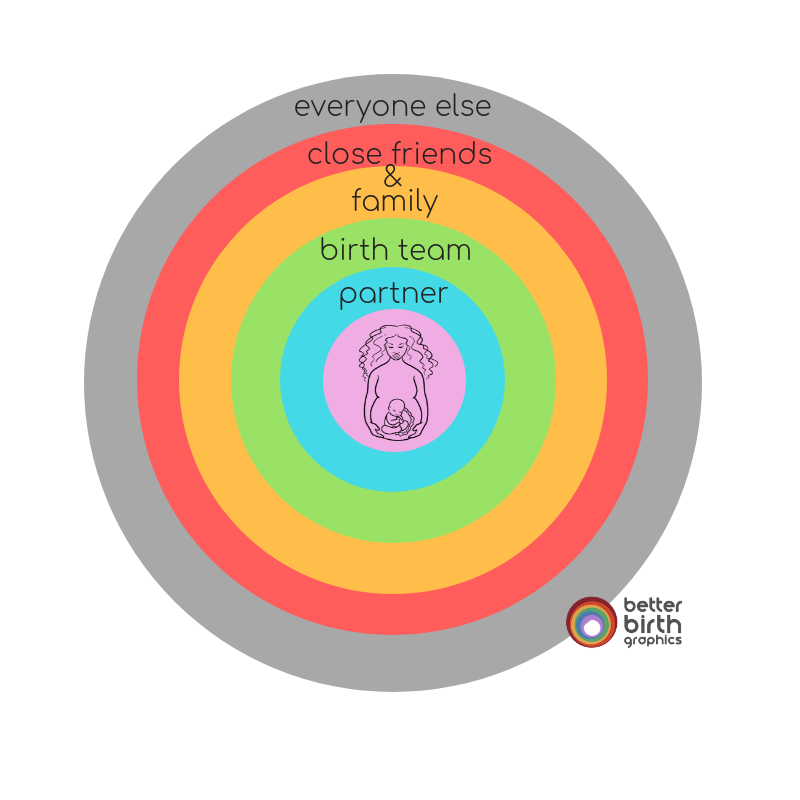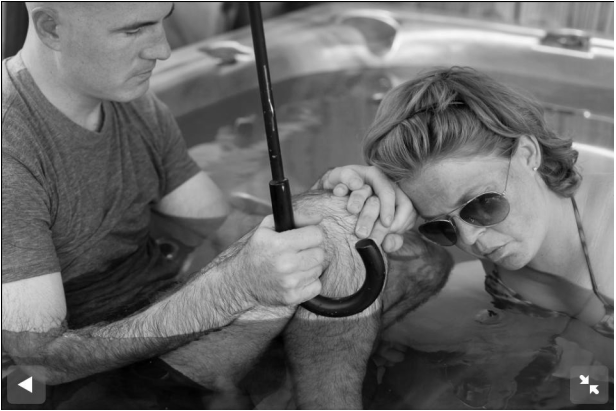
When someone we care for is working through something difficult, one of the best means of support is “holding space.” Effective labor companions know (from learning or experience) how to hold space for someone in labor. But what does that mean?
Holding space is like holding the fort. You protect the people inside the space–that’s the shield. It’s also like building scaffolding for a fragile tower. You build a safe, supportive place for work to be done. Doulas and others who regularly support people in labor learn that being useful often involves—or is even mostly about—holding space.
How can you “hold the space” in life and labor?
First, Learn to Recognize Your Own Feelings + Responses
You can “hold space” only when you’re aware of the other person’s emotional landscape while you track your own. You track your mind’s workings by noticing your own feelings, thoughts, and opinions. This noticing is essential because it allows you to prevent yourself from reacting outwardly to their feelings, thoughts, and opinions. It means not letting their difficulties become yours.
A sad person should be able to be sad without making you sad and then perhaps feeling responsible for (and sad about) your sadness.
A hurting person should be able to work through their hurt without spreading anger or causing you to act affronted, blamed, or upset. Sometimes it feels right to join in and talk about how awful your friend’s ex is, but it’s not holding space and doesn’t create healing. It certainly doesn’t work in labor.
A struggling person may want your help with the difficult situation—they may want physical support, ideas, or someone to just fix it. More often, they just need to vent. Of course many situations cannot be fixed at all and must just be lived and worked through. They just are.
Childbirth is one such special situation. In labor, you may be struggling, hurting, and sad. You may just be in another world, on another plane of consciousnesses. What you need (besides competent care, food and water) is a safe space to open up. Literally open up.
Partners, doulas, dads, mothers, sisters, and friends can all create this space.

How to Build Scaffolding & Hold the Shield
Your ability to hold the fort involves following these five steps, which you can use in any situation where you’re the supportive one.
- Remove distractions
Your needs, your ego–they don’t matter here. If you can’t check them at the door, don’t go through. Your phone also takes a back seat. - Recognize your feelings throughout
You can’t control something you can’t name. Notice and name your feelings so they don’t control you. When your reactions are not controlled inside, it’s harder for the person you’re supporting to keep the tenuous hold they have on control. You’re supporting. You’re the scaffolding. You can’t bend and sway; unstable support makes unstable people feel worse! And it makes your support untrustworthy. - Respect the other person’s feelings
Her feelings don’t have to make sense or be right or kind or what you think of as normal. Give her the space to have whatever feelings or response to the situation she has. People going through something hard have the right to go through a range of emotions and reactions without being judged. You don’t have to agree. You just have to allow the feelings to be there. - Reflect back the experience
It’s not sympathy or validation we need in labor. Feeling pitied doesn’t help. We need someone to be in the space with us. Again, you don’t have to agree or like or understand why. You’re the steady, stable one, but you have to connect with the feelings. Show that you notice how she’s feeling using your eyes and tone. - Radical trust
Your job is support. Not remodeling. Don’t start sanding or get out your chisel. People have to fix and help themselves. The best we can do is give them an environment of support, trust, and reduced resistance. It’s the person in labor who has to erect the flag. You can hold the post hole stable or shield her from attackers. But you can’t do the work or change the work. You “hold the space” because you trust she can do it. You believe in her. If you get out the chisel or start surreptitiously sanding, you’re expressing distrust and taking power away. Pointing out someone’s limitations, failures, or blind spots is decidedly not supportive. A good labor support person can recommend fixes or helps, but their primary job is in not-fixing, in letting childbirth unfold.
People Build Around Each Other
Many people are involved when a baby is born. Unless you’re planning an unassisted birth, others will be around. If you are the other parent, the partner, this birth will be intense for you as well. You need support, too. Choose your birth team (provider, birth place, doula, etc) and which family and friends will be involved based on who will offer the kind of support you both need.
Each person builds the scaffolding support and then holds the shield for the people inside their circle. This diagram shows how the central person doing the central work isn’t supporting or helping anyone. The partner builds support around them, the birth team (including and especially the doula) around the two of them and so on.

Offer Unconditional Support
Even if the she yells, swears, gets combative, can’t stop crying—you stay with her physically and energetically. Even if labor lasts 28 hours.
This profound respect for her and what she is doing has long-lasting effects on her self-esteem and parenting.
Very few of us have ever been cared for in such a way for such a time—at least not since our own infancy. Despite being exhausted or overwhelmed yourself, you can hold the space completely without judgement, stay with her and love on her. This is the ultimate gift.
Rent the Right Tools
Doulas are trained to hold space. They also know when to offer the parents a tool. You may be the best shielded scaffolding available, but you may need a hand. Having an experienced birth-scaffolding builder with you makes building easier and better. Think of it as renting the perfect tools and lifts instead of having to climb and lift it all on your own. The right doula comes equipped with exactly what’s needed. They know what’s needed and how to stack the deck for an easier birth. The scaffolding is more likely to hold.
When you and a doula hold this space for someone who is doing a hard thing, it’s doubly powerful. With the right support all the way out the circle, both parents can meet their baby in an environment where they felt unconditionally loved and trusted. They’re then able to provide that love to the baby.

The love and support given during labor brings up subconscious memories and hormones that serve the capacity to love the baby. Parents who feel the flow of love and support make more love, protection, and caring hormones and are then able to provide the shielded scaffolding the baby needs to transition to this world. What goes around comes around.
The parents’ hormones learn (remember) unconditional loving presence and then are better able to offer that to the baby. Studies show that parents who had loving care during labor are less anxious, less depressed, more able to understand and care for their babies.
A Skill For All Seasons
Practice holding space in daily life. If someone comes to you with a problem they want to hash out or vent, use the five steps above. It’s especially good to practice with the relationships that matter most. So when your partner expresses difficult feelings or is having a hard time, practice holding space by going where they go, monitoring your feelings and trusting. Learning to do this will be valuable in all your relationships. The control you have and empathy you’re able to provide will establish you as trustworthy, strong, and-if we’re being honest- very sexy.
All of those traits are valuable to a woman in labor and to new mothers as they recover from birth and learn about their babies.
What “Holding the Space” Might Look Like in Labor
- Holding her hand and whispering I love you
- Asking for a new nurse if the one you have is negative
- Dimming the lights, spraying comforting scent, or closing the door
- Being there, being calm, and smiling when your partner looks at you
- Nuzzling, kissing, hugging
- Saying “You’re doing it. You’re amazing. This is incredible.”
- Moaning together
- Breathing together
- Helping her walk around
- Being something soft and strong to lean on
- Saying “I’m right here.”
- Asking the staff questions you know she might want to ask
- Watching for when she needs to move or starts to seem more uncomfortable
- Having positive, encouraging thoughts throughout
- Insisting (calmly but seriously) that the staff stick to the birth plan
- Rejoicing together
These images were taken from my post about the 10 Personalities of Dads at Birth, which lists the varied ways that the typical dad will help in labor. Thanks again to the families for letting me use their pictures.
Need something to print and show clients How to Help A Woman in Labor? Find it and others in my shop!



